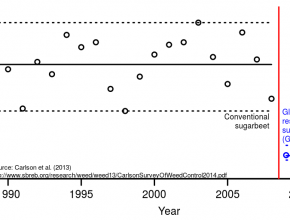Herbicide resistance predates herbicides by over 80 years
The Weed Science Society of America (WSSA) recently posted a press release headlined “WSSA Scientists Say Herbicide Resistance Predates Genetically Engineered Crops by 40 Years.” From the WSSA release: You may think weeds resistant to herbicides are a new phenomenon linked to the overuse of glyphosate in genetically engineered crops, but according to the Weed Science Society of America (WSSA) nothing could be further from the truth. This year marks only the 20thanniversary of glyphosate-resistant crops, while next year will mark the 60th anniversary …
Herbicide resistance predates herbicides by over 80 years Read More
